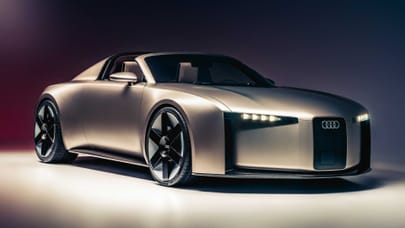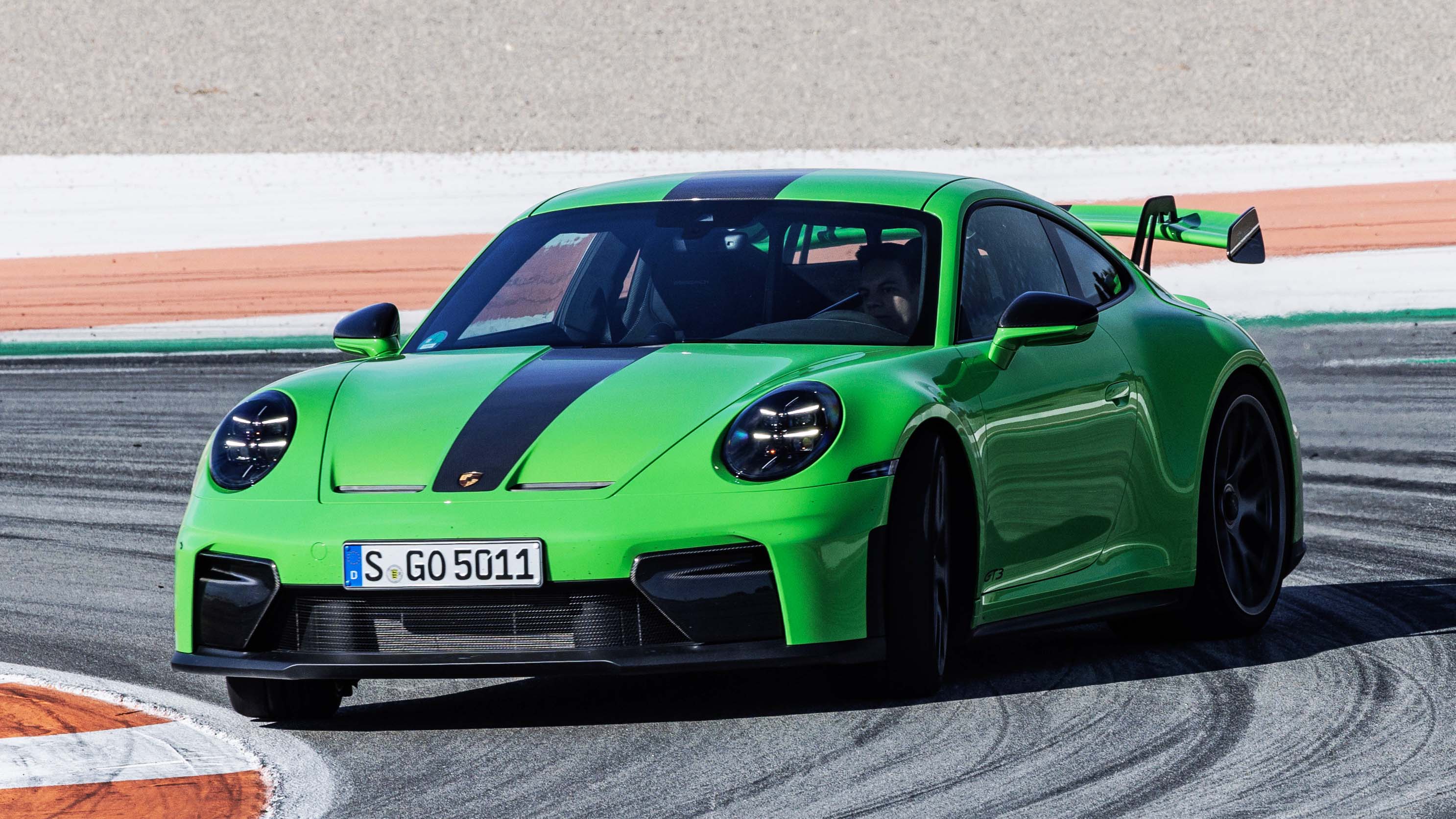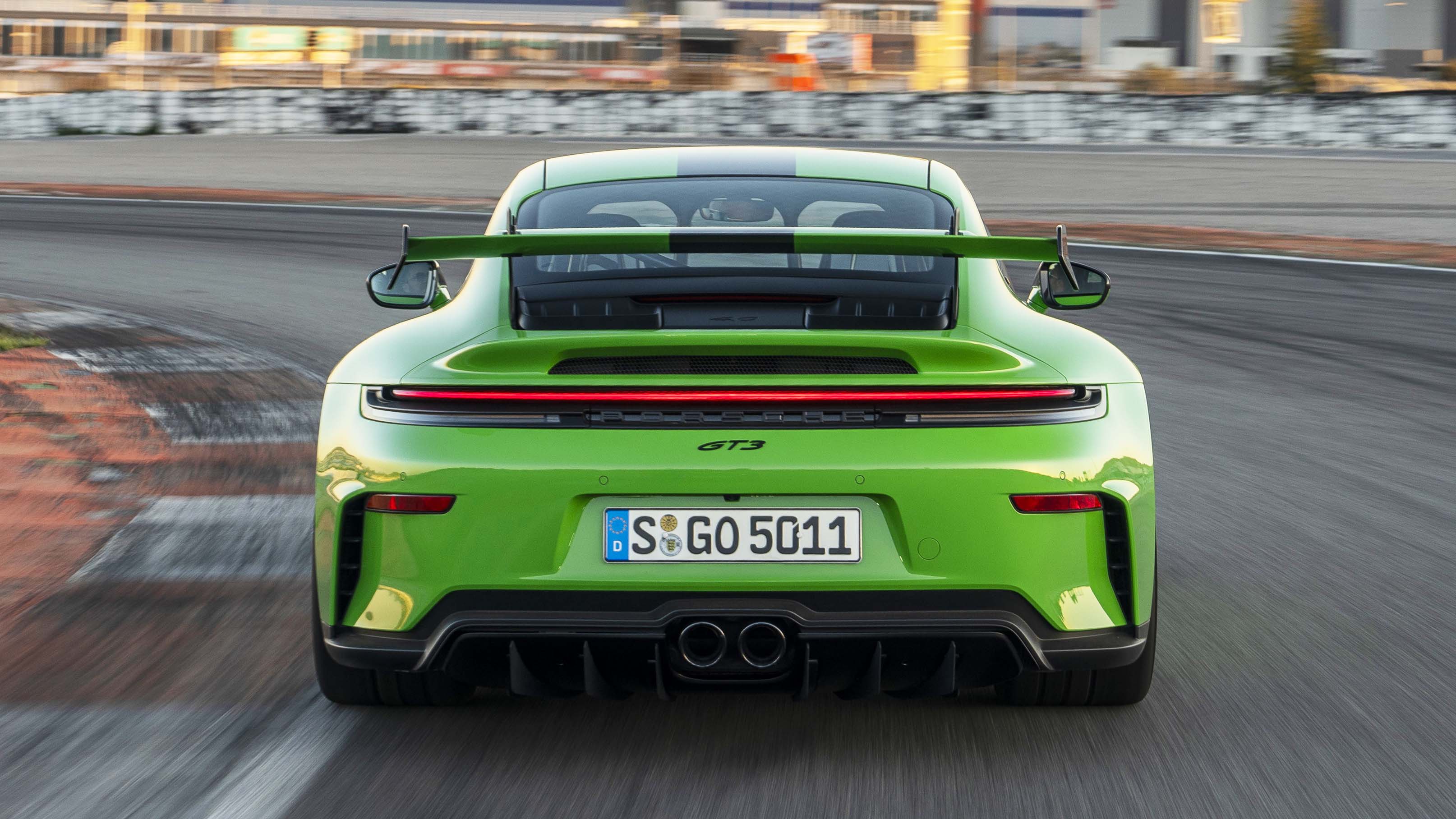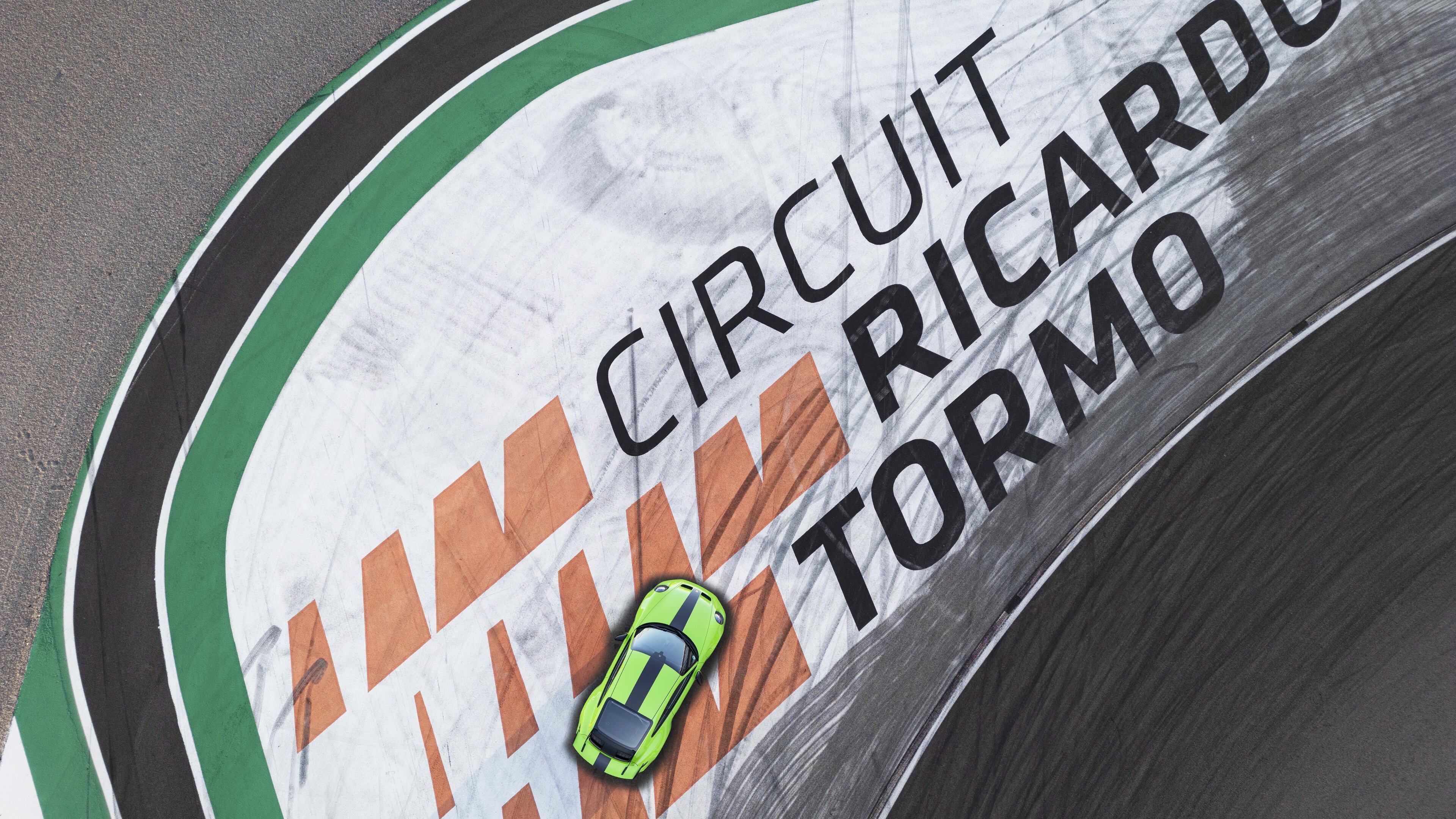
Is Porsche's updated 911 GT3 still the benchmark lightweight sportscar?
The stripped ’n’ ripped trackday special is now a staple in our supercar diet. But is the refreshed 992.2 GT3 still the boss?
The GT3 has nothing to prove. In fact, plenty of people might argue it’s impossible to improve. But while Porsche Motorsport strives for perfection, it never assumes it has reached it. Where others might look at the 992 GT3 and just puff out their cheeks, shrug and agree that leaving well alone seems a pretty solid plan, these guys and girls interrogate every little detail looking for significant improvement through myriad marginal gains.
It’s why for over 25 years the GT3 has been, well, the GT3. The default answer to so many questions. “Best track focused road car?” GT3. “Most thrilling 911?” GT3. “One car for the rest of your life?” GT3. “Car you’d sell your granny to own?” GT3. Sorry Grandma, but you’ve always said you want the best for me.
And so we arrive in Valencia, Spain under no illusions. The new second generation 992 GT3 is going to be positively brilliant. Sorry to spoil the surprise. However, there are questions to answer. Is the new GT3 really just an S/T in disguise and without the lunatic ‘overs’ market? Can it justify the price hike to an eye watering £157,300? Do you want a rear wing or rear seats? (Sadly, you can’t have both.) I know, it keeps me up at night, too.
There are a few deeper issues to resolve too. You see, the GT3 has been usurped on all sides of late. The new RS is a genuine game changer and puts clear blue air between itself and the ‘base’ GT3. (Not before it’s ripped every bit of energy from it and turned it into downforce, naturally.) No RS has ever been so differentiated from a GT3.Then there’s the retro fabulous S/T. Lighter, less complex, tuned to deliver feel and accessibility and the new darling of the Porsche fanatics. The purists’ 992.
The pincer movement seems all the more deadly since the new GT3 is actually less powerful than the car it replaces. Yep, as the 4.0-litre flat six faces ever tighter emissions legislation, even Porsche’s best efforts with hotter cams, better cooling and revised combustion chambers couldn’t prevent torque dropping from 347lb ft to 332lb ft. Outright power remains 503bhp at 8,500rpm, a number that’s climbed just 10bhp since 2017’s version. The 991.2 GT3, if you’re keeping notes.
So, never mind fighting its way out of the shadow of RS and S/T. Is the new GT3 offering a chink of light for other track day supercars to dive into and then blast wide open with glutinous levels of turbocharged power, torque and exotic drama? Maserati’s GT2 is the first among a litany of players that would just love to see the GT3 fall off.
The challenge of simply retaining that searing 9,000rpm capability and a 4.0-litre normally aspirated engine producing something over 500bhp is enormous. So much so that much of the new GT3’s technical presentation is about the severity of emissions legislation. For example, NOx limits in the US have been cut by 44 per cent since the previous generation GT3’s homologation. The new car has four cats and two gas particulate filters in the exhaust system.
Yet, despite some furrowed brows during these revelations, for the most part the Porsche engineers and test drivers seem happy. Content that they haven’t had to oversee the GT3’s death by NOx numbers. After the initial presentation I comment to Andreas Preuninger, head of GT car development, that it seems a lot of work just to stand still. He nods for a moment and then replies. “Yes, but we haven’t stood still.” I do love these guys.
Top Gear
Newsletter
Thank you for subscribing to our newsletter. Look out for your regular round-up of news, reviews and offers in your inbox.
Get all the latest news, reviews and exclusives, direct to your inbox.
Our time with the GT3 is divided between a car with a six-speed manual gearbox, rear wing and the new Weissach package on track, and a Touring fitted with PDK and rear seats on Spain’s glorious mountain roads. Both cars start out life at the same price and have the same suspension setup. The option of wing or wingless is purely a matter of taste and, I suppose, how often you need your GT3 to transport kids or petite adults.
It takes less than a lap to know that the GT3 is a mighty thing. And, yes, a step on from its predecessor. So much is still familiar, from the crisp, singular howl of the flat six as it homes in on 9,000rpm to the sublime balance and blackout optional ceramic brakes. Yet subtle but tangible changes seep through to your hands and senses. For example, to compensate for the slight loss of torque, the gearing is eight per cent shorter. This increases torque to the rear wheels, creates even sharper response and allows you to interact with the short, mechanical H-pattern gearshift more often. What a treat.
With less sound deadening (Porsche has saved weight wherever possible to ensure the GT3 is just 2kg heavier than previously despite new safety and emissions equipment) the soundtrack is even more intense and uplifting. And changes to the suspension, most notably an aerodynamically sculpted and downforce inducing front trailing arm plus a lower pivot point and shorter bump stops, reduce dive and increase the suspension’s ability to strike kerbs or UK spec cratered B-roads.
Marginal gains, yes. But noticeable. For example, on a full emergency stop from 124mph the previous GT3’s nose would dive 12mm. With the new car, that’s reduced to 6mm. Those shorter bump stops have also required a new RS derived damper strategy, increasing the stability of the platform at all times. You can feel it. Even at maximum attack the GT3 remains absolutely composed and always seems to have spare capacity to correct any little mistakes. Need to wind more lock on? No problem. A sudden stab of brakes mid-corner? The GT3 will tolerate it in ways an older 911 just wouldn’t understand.
For a car with so much grip and composure, the limit of grip seems incredibly elastic. At first even finding it requires some real commitment. For those early laps you’ll instead just boggle at the traction and sense of calm. Push harder and you can feel the chassis starting to work and very quickly you can tease it right at the limit and shape the trajectory of the GT3 by balancing steering, throttle and brakes like a true pro. For such a fast car it seems to give you so much time to make decisions.
Get to the point where you’re confident to turn in on the brakes, feel the rear slide but then stabilise and then drive out of the turn at full noise with just a few degrees of opposite lock and you’re literally in heaven. Every 911 cliche turned up to 11 but the fear factor almost entirely removed. Precise yet indulgent, spookily stable yet so fluid. The GT3 really is something special.
The Weissach package helps. Probably. It’s that marginal gains mentality in carbon fibre form. Consisting of carbon fibre air blades at the front, mirror shells, a carbon fibre bonnet, roof and end plates for the rear spoiler, plus rear anti roll bar, drop links and shear panel made from the glossy black stuff, it saves around 20kg. That’s a good number. However, the price is £15,597, or £19,531 if you opt to include the carbon fibre roll cage. The interior also gets lightweight door panels, Race-Tex trim and carbon fibre doorhandles. Should you wish to go lighter still there are magnesium wheels saving 9.1kg for another £13,759, plus carbon ceramics at £9,087. The £200,000 plus GT3 is a reality.
You can get most of the same goodies for the Touring in the Leichtbau (‘lightweight construction’) package, which includes magnesium wheels but comes in at £29,223. If you’ve chosen to stick with the 6spd manual, you’ll also get the physically shorter shifter from the S/T. The package also includes a Leichtbau badge for the centre console. Our Touring for the road isn’t blessed as such. It does have foldable carbon fibre sports seats giving access to some beautifully trimmed rear seats though.
The experience is so enthralling that there’s no time to intellectualise the process
On Spain’s butter smooth roads the GT3’s incredible combination of unshakeable control and deft response continues to impress. In fact, if anything, it’s even more otherworldly. The previous GT3 could feel a little too responsive and prone to tramlining, but the new car seems slightly calmer and hence more intuitive. Grip on corner entry is huge but the front and rear respond as one and you can feel each tyre sharing the load.
Once again the immense capability doesn’t diminish the reward. Communication is crystal clear and despite the vast talents of the GT3, you feel absolutely intrinsic to the way it goes up or down a mountain pass. Every throttle input is accurately followed and has a direct impact on the car’s trajectory. The balance is assuredly neutral but minutely adjustable. The whole car is alive. Searing engine, staggeringly quick PDK gearbox and outrageously agile chassis perfectly in tune.
Any thoughts of the RS or S/T pretty much evaporate. Is the wild RS more exciting? Perhaps, on the right road. But for the GT3 every road feels like it was made just for you to enjoy. Is the S/T more special, better at conveying old school thrills? Maybe, but the GT3 counters with more grip and ultimate composure. Besides, when the world is rushing towards you and that flat six is screaming behind, the experience is so enthralling that there’s no time to intellectualise the process or rank the high quality dynamics against other brilliant 911s. You’re just right there, wringing out the GT3, wondering if it gets any better than this. Wondering how anyone else can get close...
Good luck Maserati. You’re going to need it.











